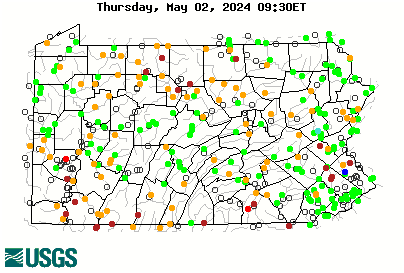One of my local brookie streams has been consistently turning up more and bigger fish for the past few months. This isn’t a small improvement, it’s a huge difference from the way it used to fish. It’s my third year fishing this stream, and during the first two years the biggest fish I’d ever caught from it was 8.75 inches. And aside from that fish, none of the other fish ever exceeded 8 inches.
This year, however, it’s a lot different. I’ve landed 6 fish that were 9 inches or longer, the biggest being 9.25 inches. I’ve lost count of the number of 8+ inch fish I’ve caught. It seems like a guarantee right now that if I spend two hours on this stream I will catch several fish near or above 8 inches.
I have no idea what to attribute this too. This stream has always been very productive, almost always yielding high numbers, but never much size. Now I catch just as much fish, sometimes more, and they are all bigger on average. I have no doubt that I’ll soon catch a fish in the 10-11 inch range if I put in the time, that’s how many 9+ inch fish I either spook or hook everytime I fish it.
A little over two years is not a very large sample size, and this could just be a normal change in the population, but either way it’s really cool.
The stream that flows down the other side of the mountain, however, is the exact opposite. I used to catch many 8-9 inch fish there, but recently I can’t even crack the 7 inch mark on a regular basis. The number of fish has greatly declined as well.
Last year a flood came though and washed out nearly every logjam, ruining all of the deep holes and leaving long stretches of unbroken shallow riffles in their place. Both streams were affected and ended up looking a lot different than before in certain areas, but only one of them suffered noticeable effects. The stream seems to be recovering as of the last time I fished it, but it’s still a shadow of what it was 2 years ago.





